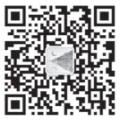The classification guidance for adults and children refers to oxygen saturation concentration as a direct basis for judgment, and compared to other diagnostic and treatment methods, the finger clip oximeter is a low-cost detection method that is easier for families or individuals to obtain. It can detect physical conditions in real time, detect the possibility of severe transformation in a timely manner, and buy time for early treatment. The finger clip pulse oximeter has gained increasing attention from users in the current situation, and some brands' products have already experienced a shortage of supply.
Shanghai Taisi Microelectronics has matured and mass-produced a single chip high-performance dedicated signal chain SoC TCAS24 and a high-performance finger clip oximeter reference solution to assist in the development of oximeter products and contribute to the public's life and health. TCAS24 has been widely applied to multiple top brands of finger clip oximeters. With its high cost-effectiveness and higher measurement accuracy compared to traditional solutions, it is entering more brand manufacturers. The turnkey reference solution provides all hardware and SDK open-source materials, supporting development and production documents and tools, saving customers' development and testing time, and greatly shortening the product launch cycle. At the same time, Taisi Micro can also provide complete solutions or products through third-party IDH, forming a comprehensive support mode that integrates chips, solutions, and products in three dimensions.
Principle of Pulse Oximeter Measurement
The pulse oximeter uses low-pressure light-emitting diodes (LEDs) that emit red and infrared light as the light source. Emitting light through physiological tissues, it is then detected and converted by a photoelectric receiver device and sent to a microprocessor for pulse oximetry. The light absorption characteristics of venous blood, arterial blood, and other physiological tissues in the human body, and the pulsating arterial blood causes changes in deoxyhemoglobin (Hb) and oxygen-containing hemoglobin (HbO2) in the absorption light pathway. Due to the different absorbance of Hb and HbO2, this absorption change is further converted into a volumetric waveform in red and infrared light. Based on Beer Lambert's law, the correlation between the amplitude of red light and infrared light wave signals further forms arterial oxygen saturation.
Clinical pain points
1. Applicability
The skin tone gradient spans white, yellow, and black, with different skin tones absorbing different amounts of light. The darker the skin tone, the greater the light absorption. Similarly, the amount of light absorbed by fingers of different thicknesses also varies, and is professionally characterized by the degree of perfusion. Therefore, the design of the blood oximeter requires dynamic adjustment of light intensity to adapt to different perfusion degrees and ensure measurement accuracy. This means that when converting light intensity to digital signals, the sampling accuracy of the MCU needs to be high enough, and the dynamic range needs to be large enough to scan the full range of signals while accurately identifying the fluctuation characteristics of the signals. Based on the sampling signal of the Taisi micro TCAS24 chip, the perfusion performance can be detected to 0.1%, far exceeding the corresponding performance indicators of mainstream household products, and can effectively cover applications in household environments.
2. Anti sports performance
At present, the vast majority of blood oxygen meters are mainly divided into two types in terms of algorithm: time-domain and frequency-domain.
Time domain based algorithms have the advantages of fast output and high dynamic response, but their anti motion performance is relatively poor, mainly because motion interference often contaminates time-domain signal features, resulting in physiological signals being affected by random motion interference noise, which affects accuracy. Simply using time-domain algorithms cannot extract effective physiological signals from noisy signals and calculate relevant parameters, ultimately resulting in inaccurate calculation of blood oxygen parameters or pulse rate parameters, and even inability to output results.
Frequency domain based algorithms can effectively handle the impact of motion interference on effective physiological signals, but they require a certain amount of sample collection to achieve this, which can lead to slow output and poor dynamic response.
The Taisi micro solution adopts a combination of time-domain and frequency-domain algorithm design, which dynamically switches between time-domain and frequency-domain processing based on the current tested pulse rate and PI value range, ensuring the optimal balance between the algorithm's dynamic response and output accuracy.
Tai Si Micro effectively solves clinical pain points by combining high-precision signal chain chips and patented algorithm design, which can meet the measurement of different skin tones, different thickness fingers, and different perfusion rates. It also supports anti motion interference and can achieve stable and high-precision measurement of blood oxygen pulse.
Hardware architecture
● Power module: the battery is powered by two AAA battery, which are boosted to 3.6V by DCDC, and then reduced to 3.3V by one LDO to ensure the stability of the power supply voltage of the main control chip when the battery power decreases
● Light emitting module: the light emitting part controls the light emitting sequence and driving voltage signal through MCU, and realizes the positive and negative switching and lighting of red LED and infrared LED through a pair of H-bridge switch switches
● Receiving module: The PD signal is converted into a voltage signal through an on chip integrated TIA IV conversion, which is then processed by an on chip integrated level 1 operational amplifier and sent to the MCU for sampling. MCU contains 14 bits of high-precision SARADC for analog-to-digital conversion
Software architecture
Finger clamp oximeter Software architecture, the functions of each unit are as follows:
MCU main control: the operational carrier of all units, which achieves orderly execution of each unit by interrupting task scheduling
Sampling and processing unit: completes physiological signal sampling and noise preprocessing, and delivers them to the algorithm uni
Blood oxygen algorithm unit: completes real-time processing of physiological signals and outputs measurement results
Key processing unit: Respond to user triggered key messages and achieve human-machine interaction function
GUI display unit: providing interactive functions such as parameter display, function setting, trend browsing, etc

